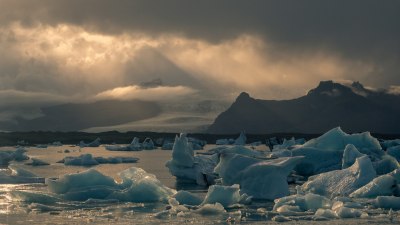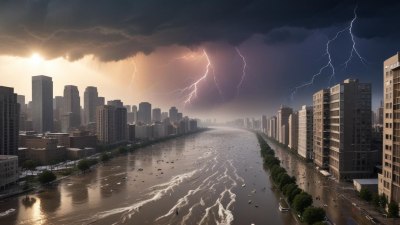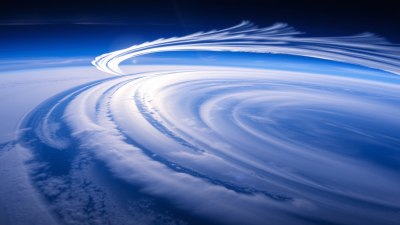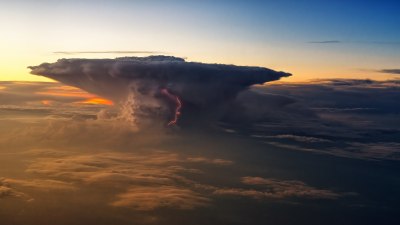How the Arctic Meltdown Is Changing Weather Worldwide
Explore the profound impacts of Arctic melting on global weather patterns.

The Arctic region, often referred to as the Earth’s freezer, has been experiencing unprecedented changes due to climate warming, resulting in significant impacts on global weather patterns. The melting of ice in this region is not just a local issue; it contributes to alterations in weather systems across the globe.
One of the most evident effects of Arctic melting is the increase in sea levels. As glaciers and ice sheets continue to melt, they release freshwater into the ocean, contributing to rising sea levels. This phenomenon poses risks to coastal communities around the world, leading to flooding and erosion. The consequences are felt particularly acutely in island nations and coastal cities, where millions of people face the threat of displacement.
Moreover, the loss of Arctic sea ice alters heat distribution in the atmosphere. Normally, floating sea ice reflects sunlight back into space. When this ice melts, more ocean water is exposed, absorbing sunlight and increasing ocean temperatures. This shift in surface temperatures impacts atmospheric currents, leading to shifts in weather patterns. For example, the alteration in heat distribution can intensify storm systems or change rainfall patterns across regions far away from the Arctic.
Disruption of Jet Streams
The jet stream, a fast-flowing ribbon of air high in the atmosphere, acts as a boundary between cold Arctic air and warmer air from the south. The presence of Arctic ice contributes to the stability of the jet stream. As the ice melts, the temperature gradient between the Arctic and temperate zones diminishes. This weakening of the jet stream can result in more erratic and persistent weather patterns, such as prolonged periods of rainfall or drought, directly affecting agricultural cycles and water supply.
For instance, in the United States, a weakened jet stream has been associated with more frequent heatwaves in the Midwest and severe blizzards in the Northeast. The impacts of these weather anomalies can be devastating to agriculture, infrastructure, and public health. Similarly, in Europe, changes in the jet stream have contributed to shifts in precipitation patterns, resulting in wetter winters and drier summers in various regions.
Global Temperature Rise
Arctic warming also contributes to the overall increase in global temperatures. The Arctic is warming approximately twice as fast as the rest of the planet, a phenomenon known as Arctic amplification. This increase in temperature is significant because it accelerates the melting of permafrost—permanently frozen ground—which releases greenhouse gases like methane and carbon dioxide into the atmosphere. The release of these gases further exacerbates global warming, creating a feedback loop.
This feedback loop presents challenges for climate change mitigation efforts. As temperatures rise, the potential for further warming increases, leading to more extreme weather events. Cities and nations worldwide will need to adapt to these changes to ensure public safety and environmental protection.
Impact on Extreme Weather Events
The connection between Arctic melting and extreme weather events is evident as isolated incidents of severe storms and floods become more frequent. Warmer ocean temperatures fuel the energy of hurricanes and typhoons, making them more intense. A striking example occurred in 2017 when Hurricane Harvey devastated Houston, Texas. The storm was partly fueled by warmer sea surface temperatures, and its effects were felt across vast areas, resulting in significant property damage and loss of life.
Furthermore, the interaction between the warming Arctic and tropical weather patterns can lead to increased precipitation in certain areas, contributing to flooding. Conversely, other regions may experience prolonged droughts, impacting water supplies and agriculture. The resulting stress on ecosystems and human communities illustrates how interconnected our climate system is and emphasizes the importance of understanding these dynamics.
Effects on Wildlife and Ecosystems
The impacts of Arctic melting are not limited to human communities; they extend to wildlife and ecosystems as well. As sea ice diminishes, species such as polar bears, seals, and walruses face significant habitat loss. These animals rely on sea ice for hunting and breeding, and the loss of their habitat threatens their survival. Beyond iconic species, the changes in the Arctic ecosystem also affect migratory birds and fish populations, leading to shifts in biodiversity.
The melting ice also opens up new shipping routes in the Arctic, leading to increased human activity. This brings new challenges, such as oil exploration and increased shipping traffic, which pose risks to marine ecosystems. The likelihood of oil spills and pollution increases, further stressing already vulnerable Arctic habitats.
International Implications
The Arctic is not just a local issue; it holds significance for global geopolitics and international relations. As ice melts, countries are vying for control over new shipping routes and access to untapped natural resources. The Law of the Sea and international agreements guide these interactions; however, as competition intensifies, tensions may rise among nations.
International collaboration is crucial in addressing the challenges posed by climate change. The Arctic Council, which includes eight Arctic nations, serves as a platform for cooperation on issues of sustainable development and environmental protection in the Arctic region. However, a holistic approach that includes voices from indigenous communities and non-Arctic nations is critical for effective solutions.
Preparing for the Future
In light of the dramatic changes occurring in the Arctic, preparation and adaptation have become essential elements in our response to climate change. This includes investing in renewable energy sources to reduce reliance on fossil fuels, implementing sustainable agricultural practices to adapt to shifting weather patterns, and enhancing infrastructure resilience against extreme weather events.
Public awareness and education play essential roles in encouraging individuals and communities to take action. Understanding the interconnectedness of climate systems and advocating for policies that mitigate environmental impacts are necessary steps toward a sustainable future.
The Arctic meltdown poses significant challenges and risks, extending far beyond its geographic boundaries. As ice continues to disappear, global weather patterns will evolve, impacting ecosystems, economies, and communities worldwide. A comprehensive understanding of these changes and a collaborative approach to solutions are essential for safeguarding our planet’s future. In the face of climate change, collective action and diligence will play pivotal roles in navigating this complex and pressing challenge for humanity.











